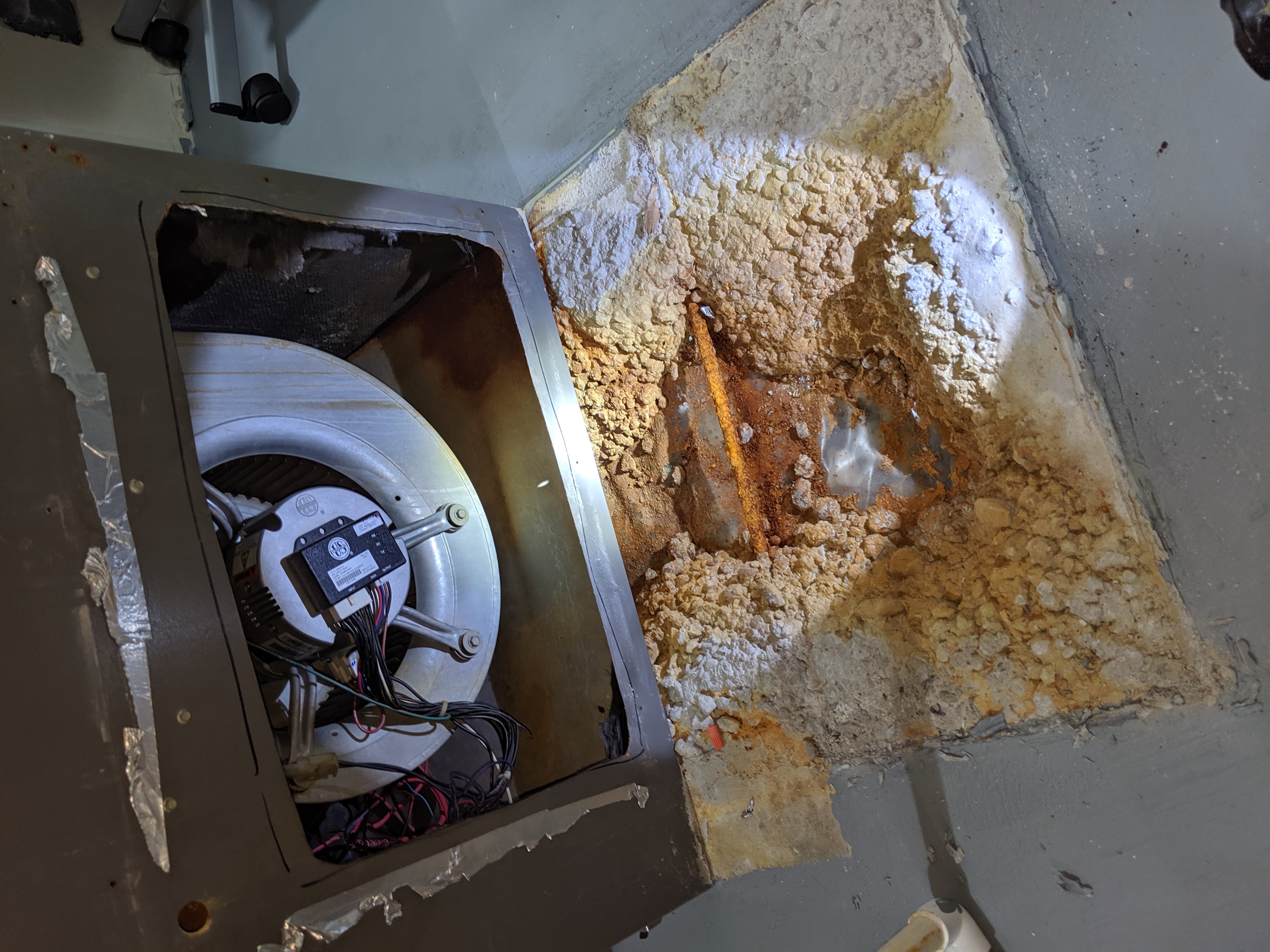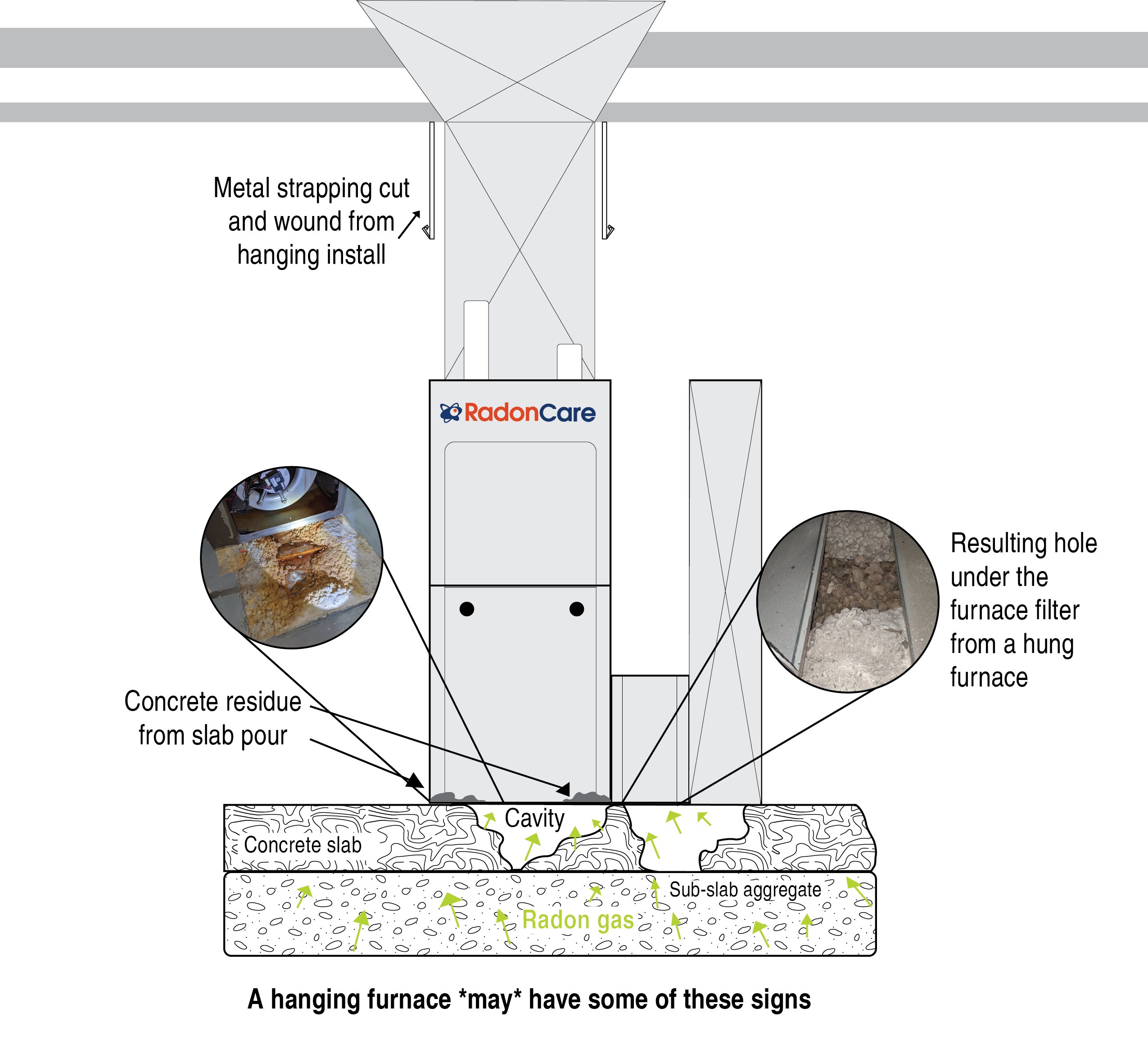
Why Are Hanging Furnaces A Problem?
See how your furnace could be contributing to your radon problem.
- by andrew
Since as far back as 1957 and continuing today, Calgary and the surrounding area has been home to a curious building practice we have come to know as the “hanging furnaces”. It is only somewhat recently that the issues surrounding this practice have been brought to light and as such there are many homes being built today using the same procedure. As far as we have seen this is a very very common practice in Calgary and an extremely rare, or even unheard of, one elsewhere in the province and across the country.
With this tactic, hanging a furnace during construction will most often (96% of the time or more) lead to a perforation in the concrete under the furnace. This perforation can lead to a host of air quality issues in the home, most notably radon, but also including methane, VOC’s, unpleasant odours and humidity, increased maintenance cost of mechanical equipment, and other significant hazards such as carbon monoxide poisoning. Fortunately, these can be remedied during radon mitigation installation.
What is a “hanging furnace”?
A “Hanging furnace” refers to the process of installation rather than the visible area in the home post construction. Many homeowners are unaware their furnace was installed this way as at first glance nothing looks unusual. Prior to the concrete slab pour, furnaces are suspended from the floor joist (main floor) with the bottom of the furnace at the level which concrete will eventually reach.

But… Why would anyone do that?
Building construction processes have evolved over time to become exceedingly efficient. A hanging furnace allowed builders to streamline processes and reduce the need for additional inspections and coordinate the deployment of various trades and importantly there just didn’t seem to be a need not to.
It is important to note that building practices change over time as new data becomes available and existing building practices demonstrate their strengths/weaknesses. Most builders who have employed this practice are simply not informed of the dangers and risks associated with the process. Hanging furnaces are not the first such practice. Asbestos was once celebrated as a wonder building material and used by almost every builder in nearly every product they could get it into - siding, stucco, insulation, drywall, carpet, tiles - to name a few. Only after new information became available did homebuilders and the building code change to prohibit its use.
As with Asbestos, hanging furnaces served a purpose and remained a popular building practice in and around Calgary and for a while there was no reason to change.
What are the issues that can arise from a hanging furnace?
The return (cool) air falls and is pulled through the return air ducts, directed towards the furnace filter and into the blower motor. Since the bottom of the furnace is pulling in the air from the home, if any leakage exists in the furnace cabinet or ductwork the furnace can “mine” radon (amongst other things) from beneath the concrete slab. This air is then brought into the furnace and spread throughout the house.
To exacerbate this problem, since a furnace supplies the most air to the largest rooms of the home on the 2nd floor (which have the most air loss) this typically means the bedrooms. A hanging furnace permits radon a direct path from the basement to the rooms we spend the most time in.
Hanging furnaces can cause:
Increased radon levels in the home
Increased radon levels in the 2nd floor bedrooms of the home
Increased exposure to any other VOC’s and/or soil gases throughout the home
Unpleasant odors such as a musty “basement smell” throughout the home. In some areas where sulfur is present in the groundwater, a raw sewage smell may also be present.
Increased cost in maintaining mechanical equipment. High humidity from groundwater may cause premature failure of some furnace components.
A potential for carbon monoxide poisoning if not properly identified or treated during when installing a radon mitigation system.
Our technicians ensure appropriate tests are completed for carbon monoxide.